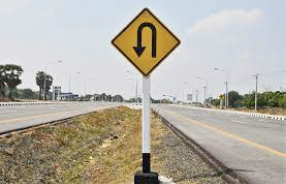Driving through the diverse landscapes of California can be an adventure, but it’s crucial to understand the rules, especially when it comes to making U-turns. In this comprehensive guide, we’ll break down the intricacies of U-turn legality in California and provide clarity on when and where these turns are allowed.
General Rules Governing U-Turns in California
California’s traffic laws include specific guidelines regarding U-turns to ensure safety and maintain traffic flow.
1. Business Districts and Residential Areas: Where U-Turns Are Limited
In bustling business districts and quiet residential neighborhoods, U-turns are generally off the table. The idea is to keep the traffic moving smoothly and minimize disruptions, especially in areas where there might be a lot of people walking around.
2. Traffic Signals and Signage: Reading the Road Signs
Keep your eyes peeled for road signs and traffic signals. These little messages tell you whether a U-turn is a good idea or not. At intersections, look at the traffic lights – if there’s a green arrow allowing a left turn, a U-turn might be okay unless there’s a sign saying otherwise.
3. Visibility Considerations: Look Before You Turn
Before you decide to make a U-turn, make sure you can see everything around you. California law is pretty clear on this – your U-turn shouldn’t get in the way of other cars. Take a good look and always yield to oncoming traffic.
4. Freeway U-Turns: Generally, a No-Go Zone
When you’re on the freeway, U-turns are usually a no-no. Unless a sign says you can, it’s best to avoid trying to flip around on freeway on-ramps or off-ramps. Stick to the posted rules to avoid any legal trouble.
Exceptions to the Rule
While U-turns are restricted in specific areas, there are exceptions to the rule.
1. Traffic Breaks: An Official U-Turn Permission Slip
Sometimes, law enforcement might create what’s called a “traffic break.” It’s like a temporary pause in the normal flow of traffic, allowing you to make a U-turn. This usually happens when they need to redirect traffic or deal with an emergency.
2. Left-Turn Lane U-Turns: Turning Left to Turn Around
If you find yourself in a lane specifically marked for left turns at an intersection, making a U-turn might be allowed. Of course, always check for signs and signals to make sure you’re not breaking any rules.
3. Residential Area Specifics: Local Rules Apply
In some residential areas, the rules about U-turns might be different. Always keep an eye out for local traffic signs to understand the specific rules for the neighborhood you’re driving through.
Legal Consequences of Illegal U-Turns
Breaking the rules about U-turns can lead to legal consequences. This could mean getting a traffic ticket, paying fines, or even getting points on your driving record. Following the rules isn’t just about avoiding trouble – it’s about keeping everyone safe on the road.
In the realm of legal support, Demas Law Group stands as a reliable ally, specializing in personal injury cases arising from incidents on California’s roads. Their commitment to client advocacy and wealth of experience makes them a valuable resource. Learn more about Demas Law Group can assist you.
Conclusion
As you traverse California’s roads, understanding U-turn regulations is vital. Stay mindful of signage, traffic signals, and local regulations to make informed decisions. If you find yourself facing legal challenges related to a traffic incident, consider reaching out to the Demas Law Group for expert assistance. Safe travels!




